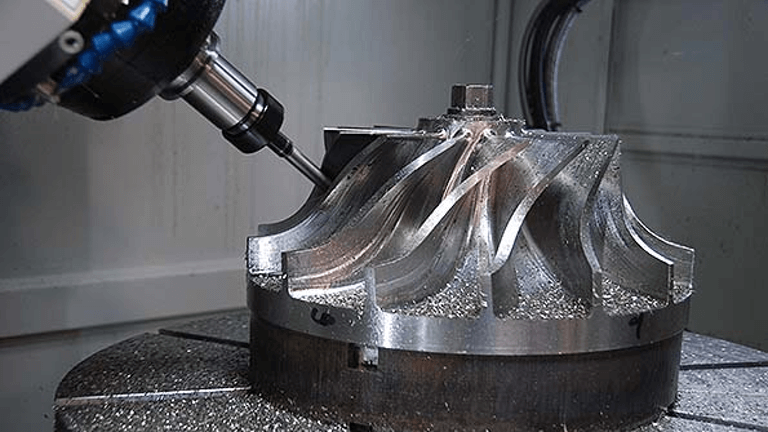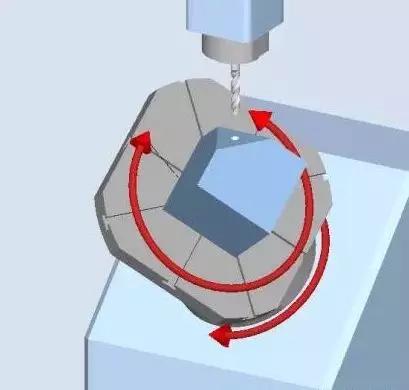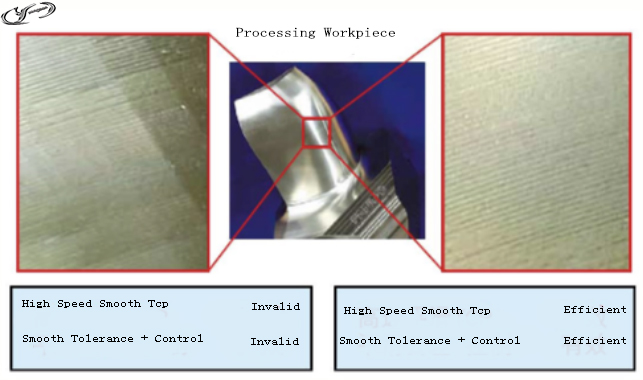In the world of precision manufacturing, machining plays a vital role in shaping and cutting complex parts. Technology advancements keep developing more productive machining methods for you to achieve unparalleled accuracy and versatility. Likewise, you may have seen advanced machining configurations have been developed recently and have gained significant popularity. Among them, five-axis machining, 3+2 five-axis machining, and 4+1 five-axis machining configurations are widely in circulation. However, today the choice is a lot more complicated. Which one is the best? Which one suits your industrial needs the best? What are the key differences between them? You might be confused about these incredibly advanced configurations.
Therefore, in this blog post, we're going to delve into the distinctive features that set apart three popular machining configurations: 5-axis, 3+2, and 4+1. We will uncover the differences that make each one unique, along with showcasing real-world examples where each one excels. So, stick with us if you want to explore the key distinctive features of each. I guarantee they will help you make an informed decision about which configuration suits your needs best. Let's begin!

When it comes to CNC machining, the number of axes plays a crucial role in determining the machine's capabilities and versatility. Now what are axes? Well, a CNC machine has typically three axes: the X-axis, the Y-axis, and the Z-axis. These axes correspond to the directions or movements along which your cutting tool or workpiece can be processed. Put simply, they are the pivotal feature of the machining process that actually determines the precision and accuracy of your workpiece outcome. Have a look at the quick breakdown.

1. X-Axis: It controls horizontal movement, from left to right or vice versa.
2. Y-Axis: It handles vertical movement, forward and backward.
3. Z-Axis: This one manages vertical movement along the spindle or tool's length, controlling the depth of the cut.
In addition to these primary axes, there are rotational axes for more complex operations like contours, undercuts, and angles during the machining process.
4. A-Axis: It enables rotation around the X-axis, allowing for angular movement.
5. B-Axis: Similar to the A-axis, it enables rotation around the Y-axis.
6. C-Axis: This rotational axis permits rotation around the Z-axis.
No matter where you work, in the aerospace, automotive, medical, or mold-making industry. The 5-Axis, 3+2, and 4+1 machining movements are still arguably the most popular way to produce products in the milling field. They enable you to have control over your workpiece to remove the material with utmost precision.
However, the very first step toward utilizing this cutting-edge technology in your industry is to understand the key differences between these machining configurations. Once you know about the functionality, process, and salient features of each of these, you can effectively optimize your CNC machining processes to achieve outstanding results.
Let's start with a 5-axis matching configuration, which involves simultaneous movement of the cutting tool along five axes: X, Y, and Z, as well as rotation around the X and Y axes. This technique provides you with the highest level of flexibility. In other words, you can produce complex geometries within fewer setups and less time.
In 5-axis machining, the work part remains stationary while the machine tool moves the cutting tool through five axes. As you can see, rotational axes provide the ability to tilt and rotate the cutting tool. This facilitates access to multiple angles and all faces of a workpiece from various directions. Therefore, you get an improved surface finish with increased efficiency and reduced cycle time. Furthermore, this characteristic makes 5-axis machines ideal for machining intricate parts, sculpted surfaces, and complex contours.
The Tool Center Point (TCP) is the reference point where the tool interacts with the workpiece. In 5-axis machining, maintaining a consistent TCP is critical. As the tool moves along multiple axes, the machine controller calculates the necessary adjustments to maintain the optimal tool orientation and contact point with the workpiece. This feature not only enhances accuracy but also improves surface finish and reduces the occurrence of tool marks.
●Greater Flexibility and Repeatability
With 5-axis machining, you can expect unparallel flexibility. While it allows simultaneous movement along multiple axes, you can machine all faces of a workpiece without repositioning. This flexibility is ideal for complex geometries and intricate parts. Furthermore, this machining requires shorter cutting tools – which means extended tools lifespan and high repeatability.
●Improved Accuracy And High Precision
As mentioned earlier, 5-axis machining reduces repositioning. This helps you minimize the chances of error and enhance the functionalities. So, overall, the results are highly accurate and dimensionally precise.
●Ability to Fabricate Smooth Surface Finish
The ability to tilt and rotate the tool enables 5-axis machines to produce an improved surface finish and smoother transitions between surfaces.
●Reduced Cycle Time
When you use the 5-axis machine, you don't need multiple setups or rearrange your workpiece. Which is why your overall production time is reduced.
●Higher machine cost
If you plan to install a 5-axis CNC machine for your industry, you should keep in mind that you need a higher initial investment compared to other configurations.
●Complex Programming
Operating a 5-axis machine requires more advanced programming skills due to the additional axes and kinematic considerations. So, it requires skilled operators to maximize the capabilities of these complex multi-axis movements.
● TCP Management
Maintaining the Tool Center Point (TCP) accurately throughout the machining process is crucial. Thus, you have to be more careful to prevent any deviations that can result in errors.
5-axis machining is a true game-changer in crafting aerospace turbine blades and all those high-flying applications. In the medical field, it enables you to create custom orthopedic implants that perfectly fit the individual's unique needs. And let's not forget about the manufactural industry, where 5-axis machining works wonders in shaping complex structural components and specialized parts for machinery and equipment.

3+2-Axis Machining is known as positional 5-axis machining. It also involves performing machining operations on a workpiece using three primary linear axes (X, Y, Z) and an additional two rotary axes (typically the A and B axes). However, you must remember that in 3+2-axis machining, the rotation of the additional axes occurs sequentially rather than simultaneously in the 5-axis.

In 3+2-axis machining, you initially fix the workpiece at a specific angle using manual or automated means. Then, the machining operation is performed using standard 3-axis movements - the cutting tool reaching all necessary surfaces at the predetermined orientations.
The TCP movement in 3+2-axis machining is discontinuous due to the repositioning of the part between different angles. This can result in slight mismatches when transitioning between operations, potentially affecting surface finish and accuracy. Moreover, it is crucial to determine the TCP accurately during setup and maintain it throughout the machining process.
●Offers Simplified Programming
Compared to full 5-axis machining, 3+2-axis machining offers easier programming, as the additional axes are used sequentially rather than simultaneously. Therefore, this configuration is most suitable for parts that do not require simultaneous cutting on all faces – like steep walls and undercuts in cavities.
●Cost-effective
3+2-axis machines are relatively less expensive than true 5-axis machines. This makes them more accessible even if you are running small to medium-sized businesses.
● Improved Access To Fabricate Intricate Features
The 3+2 configuration – thanks to stable positioning - enables you to access challenging areas which otherwise can't be processed. Suppose you want to manufacture a car engine cylinder head. A 3+2 machine can tilt the cylinder head in different orientations using its two additional rotary axes. This allows the machine to reach all critical surfaces, such as the combustion chamber and the valve seats, ensuring exceptional surface quality.
● Limited Simultaneous Movement
Unlike true 5-axis machining, 3+2-axis machining cannot perform simultaneous cutting on all faces of a workpiece, which may limit certain design possibilities.
●Reduced Flexibility
While 3+2-axis machining offers improved access, it may still require repositioning the workpiece to reach all desired features, adding extra steps, and potentially increasing cycle time. For instance, you want a deep pocket positioned at an angle in your workpiece. This may require repositioning your workpiece multiple times. This isa why the setup time will be increased and potentially affect machining accuracy.
3+2 machining brings its own set of applications for you. For mold-making purposes, you can utilize it to create complex-shaped products for plastic injection molding. Furthermore, tooling industries employ 3+2 machining for manufacturing precision cutting tools, dies, and other prototypes.
Also known as indexed 5-axis machining, 4+1-Axis machines perform operations using four primary linear axes (X, Y, Z) and one additional rotary axis (typically the A or B axis). Very similar to 3+2-axis machining, the additional axis rotates sequentially and is fixed during each operation. However, the additional axis is typically limited to positioning at specific angles rather than continuous rotation.
In this setup, the machine locks the fourth axis, while the fifth axis allows the tool to rotate freely. Put simply, the cutting tool operates in 4 axes (X, Y, Z, and one rotational axis), while the work part remains stationary for each operation. Since the workpiece is fixed on a rotary table or indexer, a 4+1-axis machine allows you to have various features without repositioning your part.
In 4+1-axis machining, the TCP is fixed during each operation as the additional rotary axis remains stationary. You see, the table axis typically has higher speed potential compared to the pivot axis. This characteristic is crucial in 4+1-axis machining as it allows for dynamic movement of the table axis while using the pivot axis to position the workpiece beforehand.

●Simplified Programming
Like 3+2-axis machining, 4+1-axis machining requires less complex programming compared to full 5-axis machining.
●Lower Machine Cost
4+1-axis machines are generally more cost-effective than true 5-axis machines, making them a viable option for you when you are on a budget.
● Increased Accessibility
You can get better access to multiple faces of your workpiece as 4+1-axis machining allows operations from multiple orientations. For instance, you can effectively produce furniture components, decorative items, and complex brackets using 4+1-axis machining.
●Lesser Versatility
As per 4+1 machining, the control over additional rotary axes is limited, which restricts certain machining operations. It is not as versatile as full 5-axis machining when it comes to accessing complex geometries. For example, a sloping surface may be challenging to machine effectively in 4+1 machining without compromising the results.
●Sequential Operations
Like 3+2-axis machining, 4+1-axis machining requires sequential movements of the additional rotary axis, which can increase cycle time.
●Limited Simultaneous Cutting
The fixed additional rotary axis restricts simultaneous cutting on all faces, potentially requiring repositioning for full machining coverage.
In manufacturing industries, 4+1 machining is commonly used for various applications. For example, in the automotive industry, it is employed for machining engine components, transmission parts, and chassis elements. Similarly, you can use it to produce smartphone casings, laptop components, and complex consumer products in the electronics sector.
In summary, the main difference lies in the level of simultaneous movement and control over the additional rotary axes. Five-axis machining provides full simultaneous control over all five axes, while 3+2 machining locks the additional rotary axes in a fixed position during cutting. At the same time, 4+1 machining allows limited movement of the rotary axes while performing three-axis machining.
All in all, the choice of configuration depends on your specific demands for the machining operation and the complexity of the part being machined. Whether you require versatility, stability, or precision, each configuration offers unique advantages tailored to your industry requirements. Remember, the world of machining is constantly evolving, and staying up-to-date with the latest advancements and configurations is essential. This will help you to achieve optimal results and stay ahead of the competition.
The YS650-5AX Five-Axis Machining Center by CNC Yangsen is a cutting-edge solution that delivers precision, versatility, and efficiency in machining processes. This state-of-the-art machine combines advanced features, user-friendly programming, and unwavering reliability to elevate your machining operations to new heights.

With its five-axis capabilities, the YS650-5AX empowers you to easily tackle the most complex and intricate geometries. Achieve unparalleled precision and surface finish by maintaining optimal tool orientation throughout the machining process.
That's not all. Programming has never been simpler. Whether you are an experienced operator or a newcomer, the YS650-5AX's easy-to-use interface allows you easily harness the machine's full potential.
So why settle for the ordinary? Choose the YS650-5AX Five-Axis Machining Center by CNC Yangsen - a trusted name in the industry that brings you cutting-edge solutions that drive productivity, precision, and success for your business.